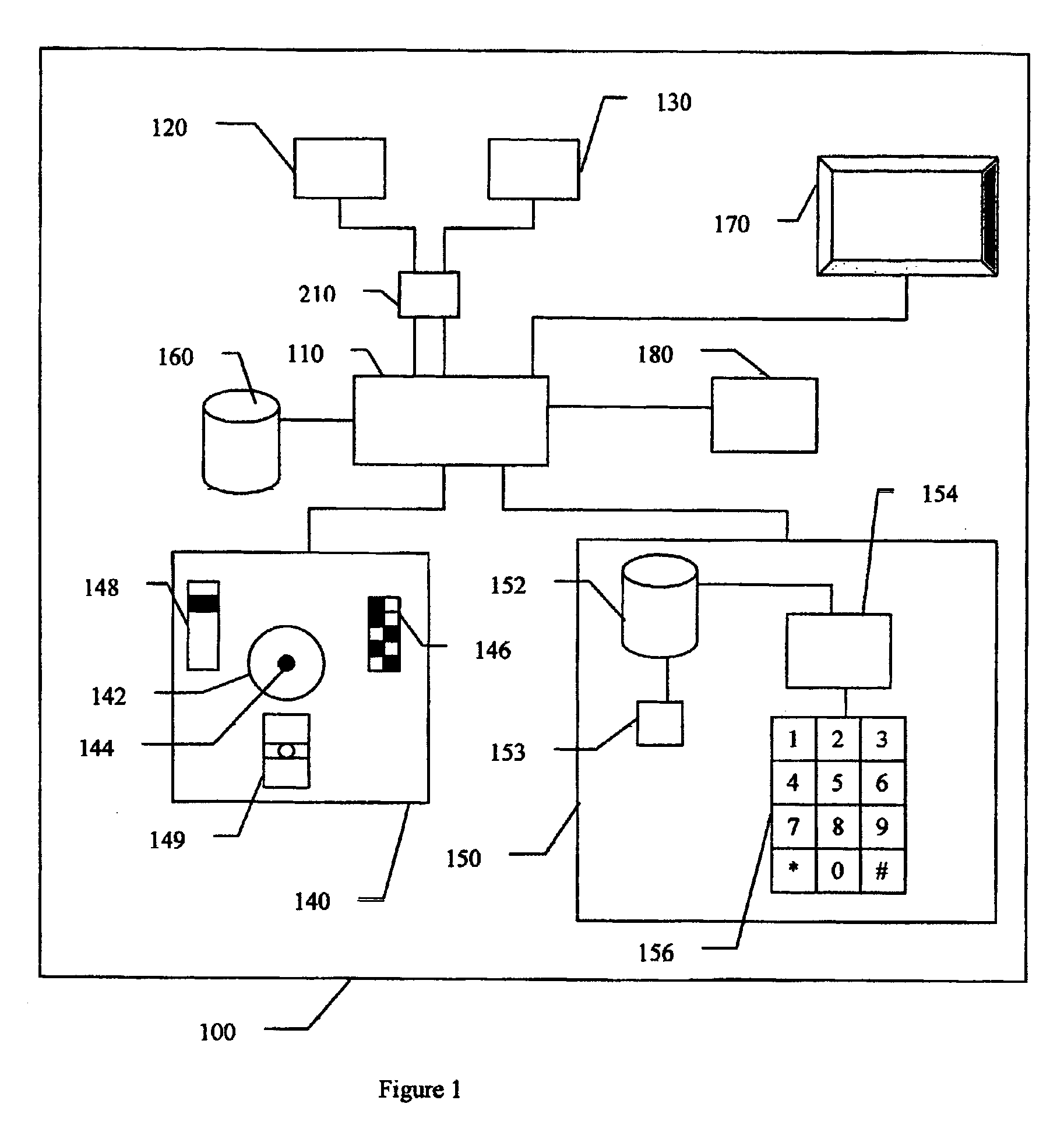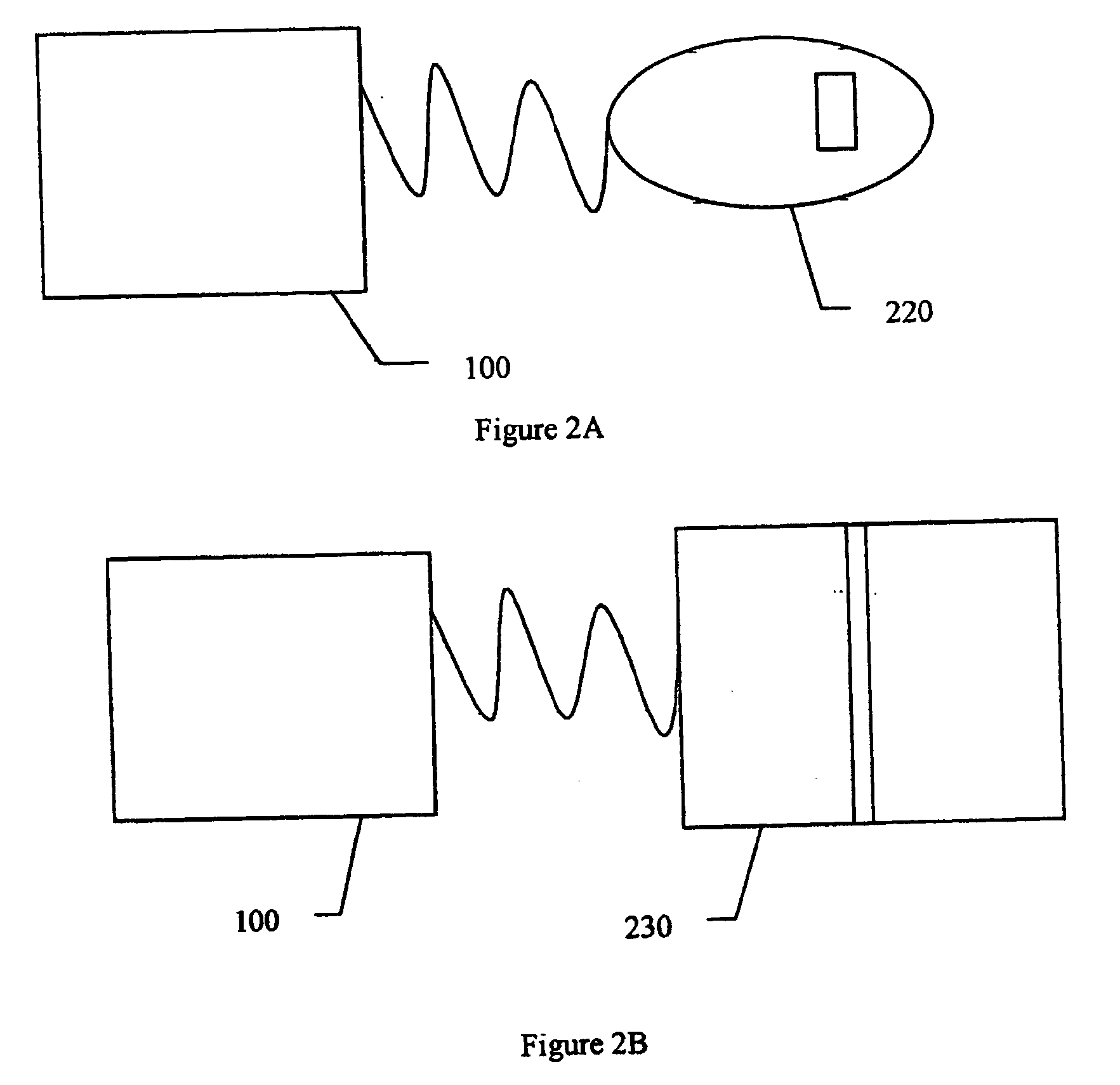Biometric identification device and methods for secure transactions
a biometric identification and transaction security technology, applied in data processing applications, process and machine control, program control, etc., can solve the problems of high cost and tedium involved in compiling and processing such data, putting the security and privacy of customers at extreme risk, and data collected has additional valuable potential
- Summary
- Abstract
- Description
- Claims
- Application Information
AI Technical Summary
Benefits of technology
Problems solved by technology
Method used
Image
Examples
Embodiment Construction
[0167]Having summarized the broad nature of the invention above, this section will focus on detailed descriptions of various preferred embodiments. Unless specifically stated otherwise, the vocabulary defined previously is intended to apply herein.
[0168]Referring now to the drawings, FIG. 1 shows a schematic of a preferred embodiment of a PID 100, which is shown enclosed by the outer boundary. Preferably, the elements indicated in FIG. 1 are integrated in a single unit, preferably supported by an external housing. The PID 100 comprises a processor 110 that processes signals from the various components and controls the operation of the PID 100. One or more processors 110 may be used, depending upon the details of the device. In various embodiments, the processor 110 processes the signals according to one or more algorithms that are loaded as software, firmware, or are hardwired into the processor 110. Although an electronic microprocessor is the preferred processor 110, all types of ...
PUM
 Login to View More
Login to View More Abstract
Description
Claims
Application Information
 Login to View More
Login to View More - R&D
- Intellectual Property
- Life Sciences
- Materials
- Tech Scout
- Unparalleled Data Quality
- Higher Quality Content
- 60% Fewer Hallucinations
Browse by: Latest US Patents, China's latest patents, Technical Efficacy Thesaurus, Application Domain, Technology Topic, Popular Technical Reports.
© 2025 PatSnap. All rights reserved.Legal|Privacy policy|Modern Slavery Act Transparency Statement|Sitemap|About US| Contact US: help@patsnap.com



